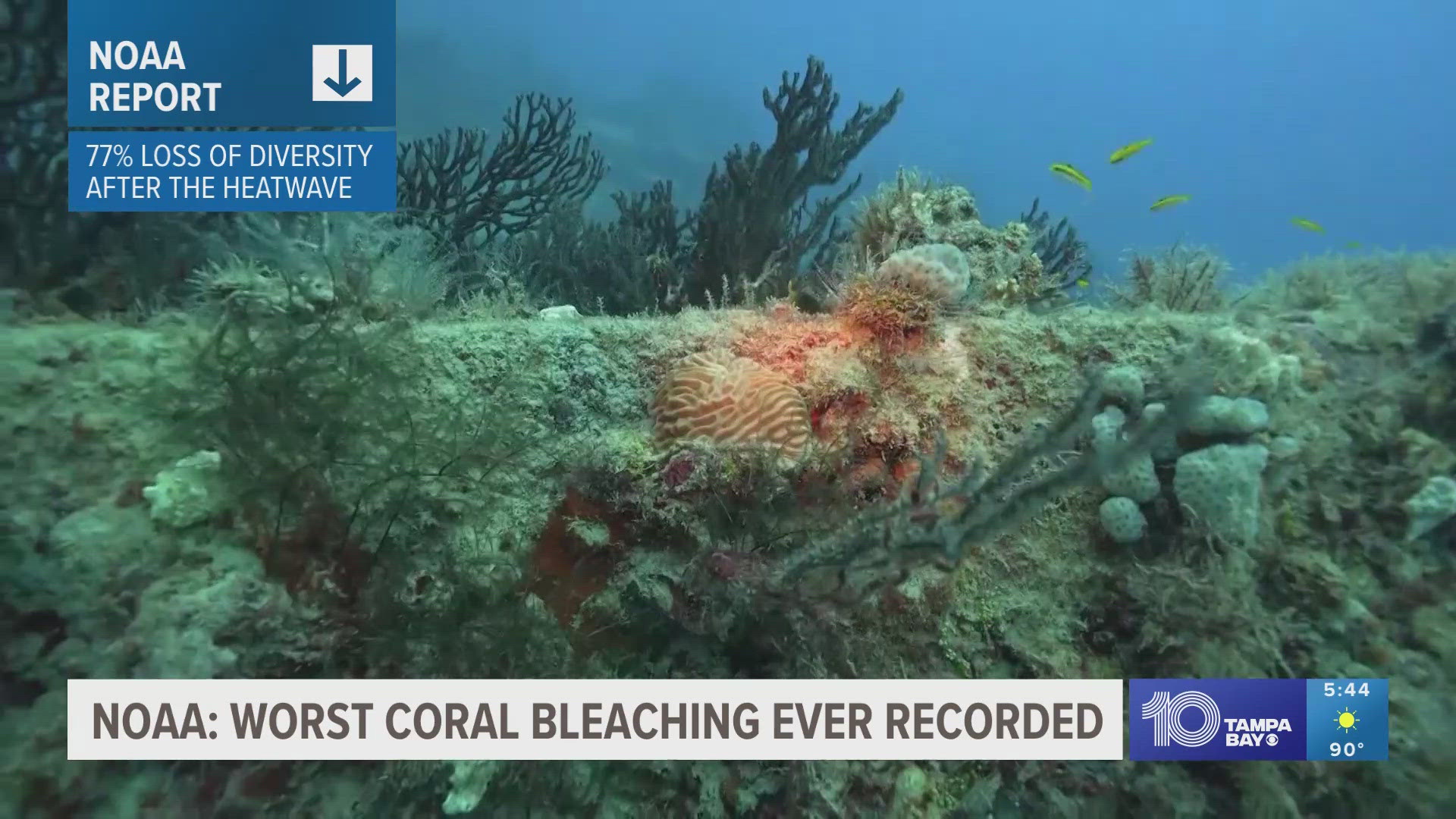TAMPA, Fla. — The summer of 2023's intense heat wave led to the worst coral bleaching ever recorded on Florida's Coral Reef, and now a little over 20% of different types of coral remain in the wild.
Scientists with the National Oceanic and Atmospheric Administration (NOAA) assessed how many distinct colonies in the population were impacted by the event. They found that 160 elkhorn coral genotypes were alive before the heatwave. After, only 37 remained, which is a loss of 77% of the genetic diversity in the coral, according to the report.
The water temperatures last summer reached up to 93 degrees on the reef with coral typically bleaching when the temperatures reach around 87 degrees, according to the Florida Fish and Wildlife Conservation Commission. Researchers there said many reefs had 100% of the corals bleached and also said there was a significant decline in elkhorn coral.
"While these genotypes have been lost in the wild, more than 180 genotypes are represented among elkhorn corals at coral nurseries and genebanks," the report said.
Diversity is important for ensuring coral populations can continue reproducing naturally so their population remains stable. Low genotypic diversity limits the population from being able to adapt to changes in the environment such as heat or disease, researchers said. Also, the elkhorn colonies on the reef are so few and spread out that it is unlikely for them to sexually reproduce.
The species is one of the most important and it is critically endangered, according to NOAA. Coral reefs are an important part of the environment because they provide shoreline protection, habitats for marine life, millions from tourism and millions for fishing industries.
Bleaching happens when the coral loses their zooxanthellae, which are the microscopic algae living within the tissue. The algae gives coral its color so when the animal loses it, they look white or "bleached." When coral doesn't have this algae for longer than a couple of weeks, they can starve to death.
The El Niño event last summer caused the ocean surface to warm above average, which contributed to the severity of this bleaching event. But, it also has been happening more frequently over the past few decades due to climate change, according to Florida Fish and Wildlife.
Anyone in the Florida Keys who spots an elkhorn colony is encouraged to report it to Jennifer.Moore@noaa.gov in case the administration doesn't have that colony or genotype documented.
Residents and visitors can also help protect corals by conserving energy, water and reducing chemical and sunscreen pollution by using sunscreen with zinc oxide or titanium dioxide, which is not toxic to corals.
Gov. DeSantis announced in June that the government will put additional money toward artificial reef recovery. He touted last year's investment of $47 million for reef restoration and coastal protection and invested another $5 million this year.

